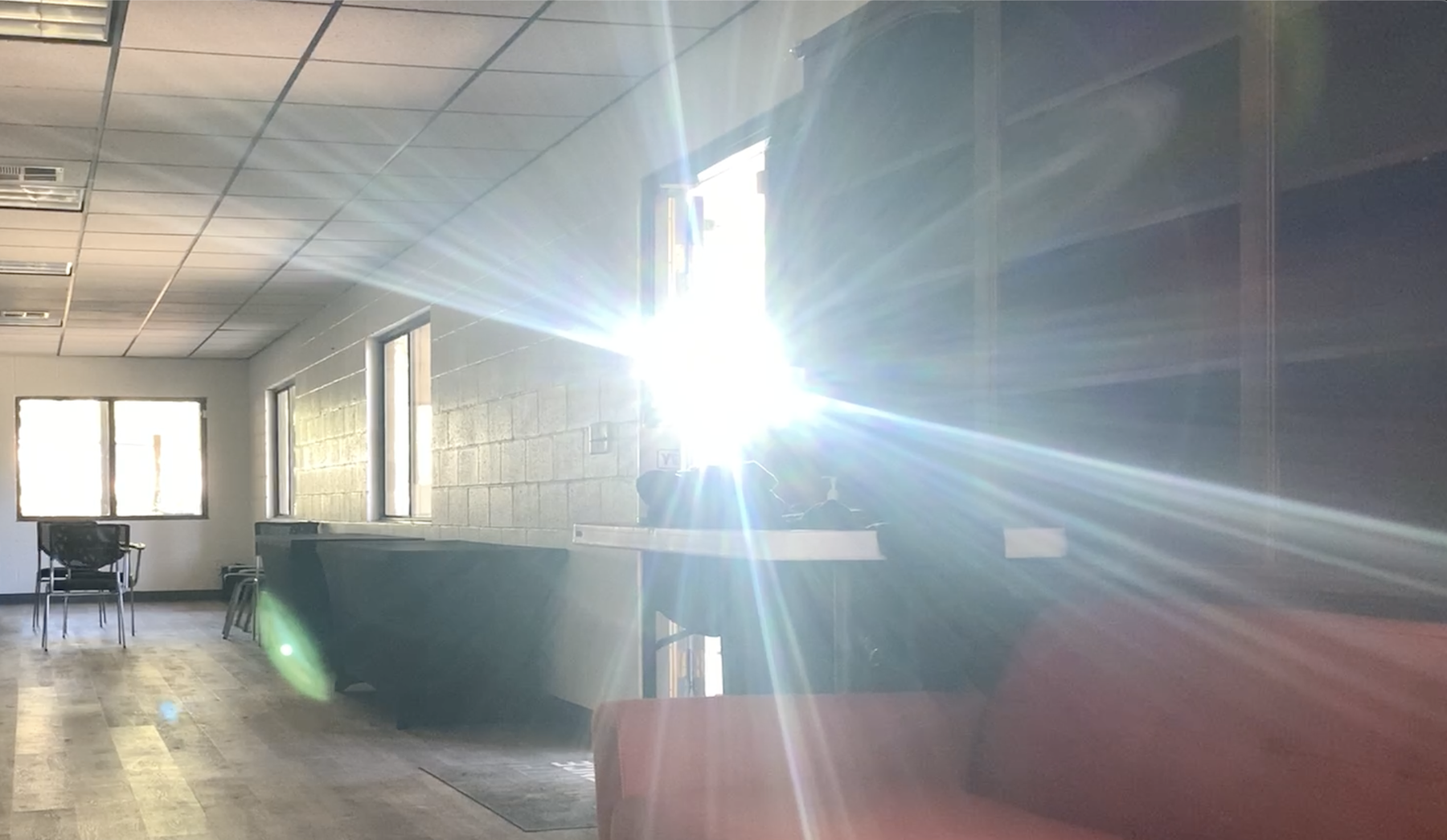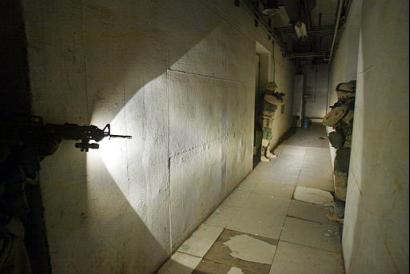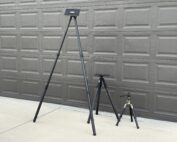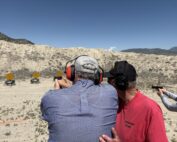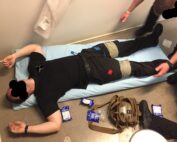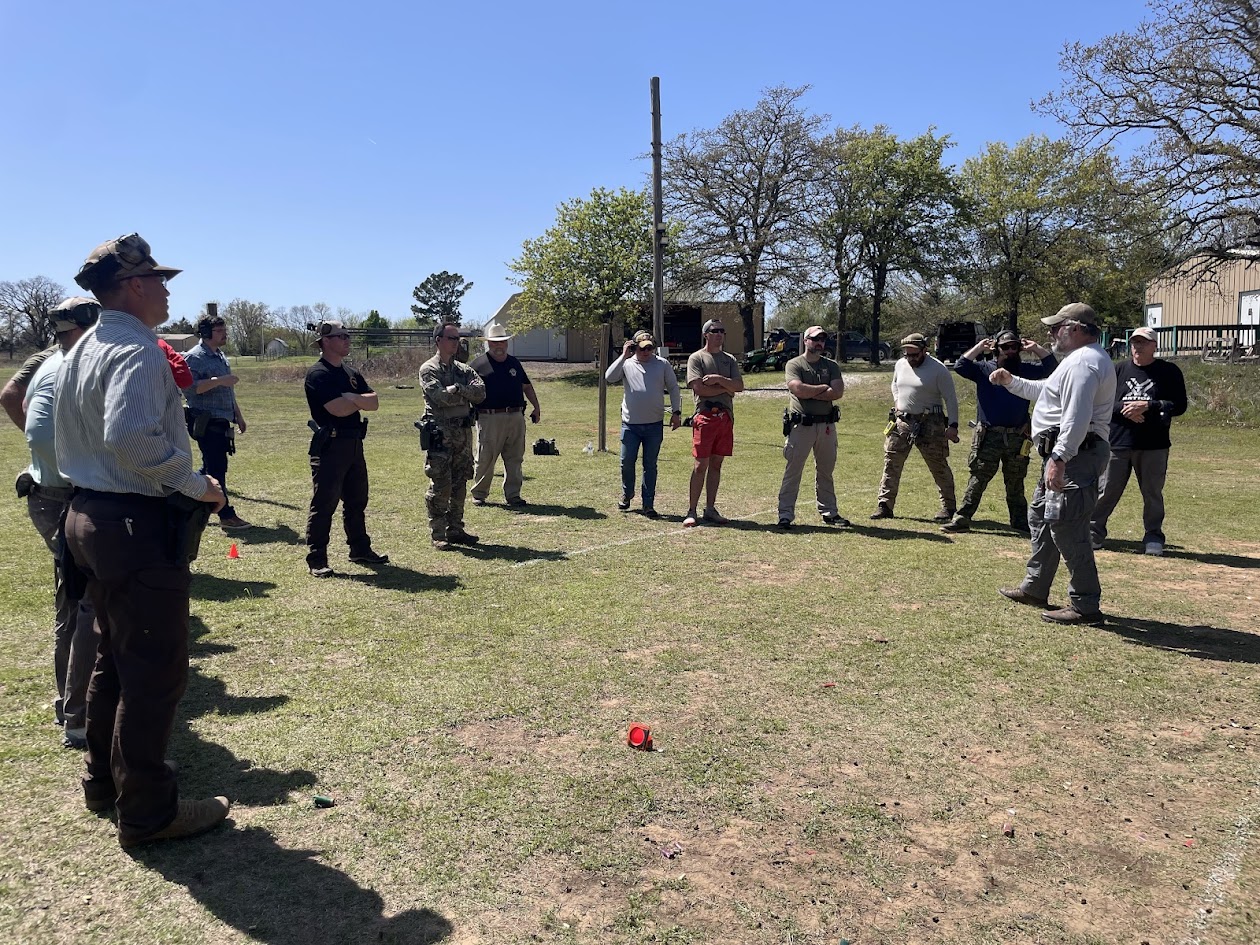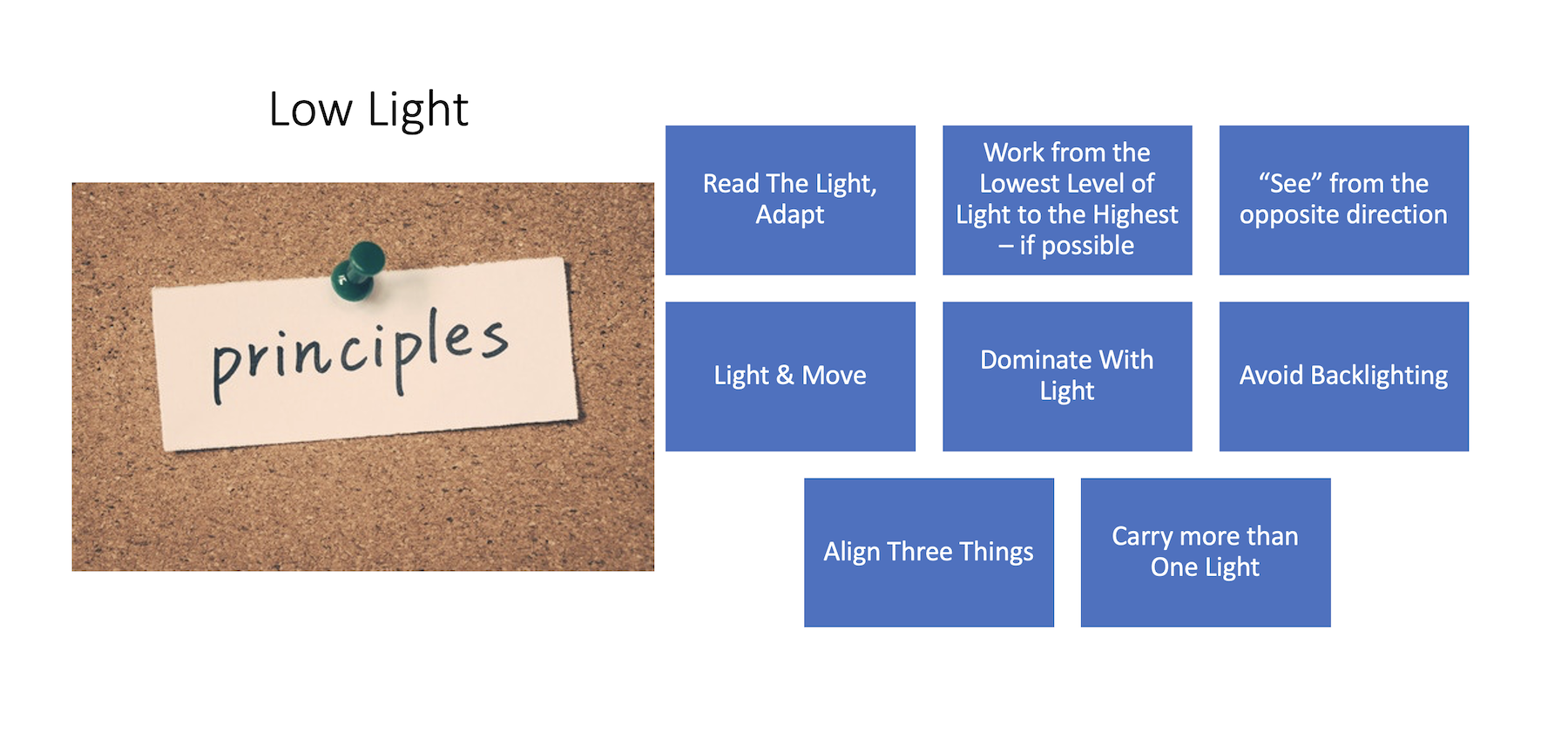
feature_principles
“Old” does not mean invalid. While tactics, techniques, procedures, and equipment (TTPEs) will change, principles will generally remain.
Ken Good and Dave Maynard spent significant time working on low light / white light issues for the US Navy back in the 90s. They formed Combative Concepts, and eventually, Ken was involved in starting the Surefire Institute, the training side of that well-known flashlight company. Ken, and others, developed and taught a low-light training curriculum across the law enforcement community.
Their material included several principles for working in low-light environments.
– Read the light, and adapt to it
– Work from the lowest level of light to the highest, when possible
– “See” from the opposite direction
– Light & Move
– Dominate the BadGuys with light
– Avoid Backlighting
– Align Three Things
– Carry more than one light

Both Andy Stanford’s book and the Surefire Institute’s low light instructor manual laid these principles out in the 90s.
Andy Stanford included several of them in Fight at Night: Tools, Techniques, Tactics, and Training for Combat in Low Light and Darkness. The book was published in 1999.
So, what do those mean?
Read the light and adapt to it.
There are four types of light – full sunlight (photopic), dawn or dusk (diurnal transition), street lights to full moon (mesopic), and just starlight to completely dark (scotopic). As you look around your world, when the light goes from daytime to darkness, what are the differences, and how does it impact you? Can there be significant differences even a few feet apart? Understand the physical environment you are entering. Be able to adjust your plan, your tactics and techniques to your circumstances.

This hallway, in the basement of a former state hospital, did not allow the officers to start out in the darkest part.
Work from the lowest level of light to the highest
It means what it says. The issue, though, is that it can be challenging to do. Generally, the threat will not stand underneath a streetlight or in the middle of a well-lit room. They’ll be on the edges, the periphery, or in the back of a dark space. Meanwhile, you are approaching from a well-lit area. Either from that street in front of their house or a hallway with the lights on.
What makes the most tactical sense may not be doable, given the environment.
The Surefire Institute told us, “All dark holes have guns.”

This probation officer is looking into a darkened room, however, what would he see looking at himself?
“See” from the opposite direction
Envision what the BadGuy is seeing, what you look like from the downrange perspective. Be able to appreciate how that can impact the outcome.
We talk about the fatal funnel and doorways. Now picture yourself standing in that doorway, and someone in that darkened room is looking at the door. What are they seeing?
Think about the issue of being backlit, whether it is because of the environment or a teammate’s negligence. How will that appear from the opposite direction?
Light and Move
There is no “one way, it works every time” answer for how much light you must use to gather the necessary information. And it can change between working alone or as part of a team.

In a training class, the officers use handheld lights to deny the “suspect” information and compel her compliance.
Power with Light
Once you have encountered a threat – whether they came to you or, because of work, you went and found them – keep that light on them. It does not have to be in their eyes but use it to ensure they are not accessing a weapon and to deny the threat of as much information as possible. The initial use of the light can impact the individual’s behavior by making them turn away or withdraw. Create a visual barrier you (or your partners) can exist behind without supplying much information to the BadGuy.
If you need to put the light in the subject’s eyes, you can do that with a handheld light; you should not do it with a weapon-mounted light.
Avoid Backlighting
One of the worst places to be, and a very common one at that. Being in a doorway, around a vehicle, or having a teammate behind you can often silhouette you. Even without using your own light, a threat in the dark can see you, and attack without exposure. This can sometimes be unavoidable, so if possible, control the source (turn it off, close it), get away, or dominate with light.
Additionally, try to not back light your friends.
Align Three Things
Regardless of the tool you use for illumination, it would be best if you got your Eyes, your Weapon, and your Light oriented on the same spot. The handheld light technique you use doesn’t matter; it must put the light on the place or area in question. I don’t always need the beam’s hot spot there, but I need to get enough light on it.

While the weapon-mounted light is not a requirement for a concealed carry permit holder, the handheld light should be.
Carry more than one light
This one should be self-explanatory. However, if not – do not just carry one light if you are going in harm’s way. Have two; anything made by man can and will fail. A weapon-mounted light is not a stand-alone light option. When I worked, I had a smaller handheld, a larger handheld, a pistol-mounted light, and a much smaller general-purpose light. In retirement? It’s a handheld light and a task light of some sort. Sometimes I will have a smaller light on a concealed pistol, but that is not the norm.
Competently presented low-light training will address these. That training should also allow you to work on these principles in dry practice, scenarios, and live fire. Given the number of shootings that occur in low light, we all need to train on these principles.


 (No Ratings Yet)
(No Ratings Yet)
